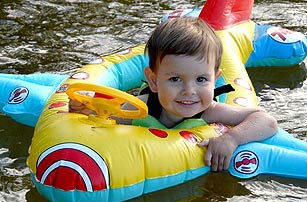Posts Tagged ‘visual’
 “How do you learn best?” ~ Pat Wyman, HowToLearn.com
“How do you learn best?” ~ Pat Wyman, HowToLearn.com
Tuesday, August 30, 2011. Once again and always, I am grateful for Pat Wyman, of HowToLearn.com, who helps kids learn in so many great ways! ~ Doc Meek
This is your HowToLearn.com Newsletter.
Today’s News: What Kind of Learner Are You? Check out the cool New App
Check out the new app on HowToLearn.com, take the learning styles quiz and share your results with your friends, family, teachers and co-workers on Facebook, Twitter, or by email.
Why? There are lots of benefits to knowing how you learn best- read on for more…
Dear Doc,
Do you know how you learn best? If you know for example
that you learn best by listening, you can record lectures
and other things, then play it back to learn and remember it
faster.
What if you’re a a more visual learner? Then you think in
pictures and recall them quickly.
How about a kinesthetic, tactile learner? Then you learn best
by doing.
There’s a new app on HowToLearn.com with a learning styles
quiz and you can share your learning styles results on facebook
with your friends.
Learning Styles Quiz App is Here
Benefits:
Friendships:
When people know how they learn best, they communicate better.
You can appreciate that your friend is a visual learner, all
neat and organized, and that you are a kinesthetic learner,
who learns more by doing and not necessarily being organized
in the same way as your visual friend.
In school:
Use your preferred learning style to recall
lectures in pictures, what you heard or how you feel about
the information.
Then on written tests, make pictures of what you read and the
pictures will help you recall the information faster.
Share your results with your teachers too – then they can
help you learn faster by using your preferred learning style.
At work:
Want to communicate bettter -use the new app and take the
learning styles quiz, then have your office share their results
around.
You’ll all appreciate each other’s learning style more and
understand better ways to communicate.
Check out the new app here and share your results on Facebook,
Twitter, or by email.
Enjoy and have fun with the new app.
Warmly,
Pat Wyman
Founder, HowToLearn.com
The Center for New Discoveries in Learning, Inc., 4535 W. Sahara Ave., Suite 200, Las Vegas, NV 89102
Thank you Pat Wyman! You’re a true friend to students and their parents!
Doc Meek, Tues, Aug 30, 2011, Sherwood Park, Alberta, CANADA
 The learning brain needs “uprightness” for greatest efficiency
The learning brain needs “uprightness” for greatest efficiency
Human neurology thrives on color, movement, gentle music, and “uprightness” for the most efficient learning
The learning brain needs “uprightness,” in addition to color, movement and gentle music (discussed in my previous article, June 12, 2010). If you wish to review that previous article, just click on the title below:
A learning brain learns best with color, movement, and gentle music

What is meant by “uprightness” for most learning efficiency?
The ideal of “uprightness” occurs when the student is at a blackboard (greenboard).
The brain is so constructed neurologically that it is most efficient when the material to be learned is “above the noseline,” so to speak, as in the photograph above.
In other words, the best brain “registration” for memory occurs when the material to be learned is located above a line straight out from the students nose.
Why is “above the noseline” best?
We are not sure why. It seems that human neurology is arranged vertically, somewhat analogously to a vertical four-drawer filing cabinet.
(1) The top drawer registers and files visual material, the pictures we see with our eyes.
(2) The second drawer down registers and files auditory material, the things we hear with our ears.
(3) The third drawer down registers and files haptic material, the tactile sensations we encounter with our hands, and the rest of our body. It also includes the proprioceptive system, the internal sensations of the muscles, joints, tendons, and inner ear, that accompany body movement.
(4) The bottom drawer registers and files affective material, the emotions we feel in our “heart,” or “gut,” if you like.
Thus, when we are presenting visual material to students, and almost all of academic learning is visual (reading for example, or math worksheets, or whatever), we need to get as close as we can to the ideal of being “upright” at the blackboard (greenboard).
Some teachers have wall-mounted “Smart Boards,” connected to their classroom computers, and these follow the ideal even more than blackboards (greenboards). The student is “upright” before the “Smart Board,” the student is moving his hands to manipulate the material appearing on the “Smart Board,” it is in color, and presumably gentle learning “baroque” music could be added as background, although I have not seen this yet.
Voila! All the best items needed for best learning:
– Color
– Movement
– “Uprightness,” to provide material “above the noseline”
– Gentle “baroque” music (about 1 beat per second, or 60 beats per minute)
– Not to mention a caring teacher close at hand 😮
Yes! Caring!
Doc Meek, Thursday, June 24, 2010
At Sherwood Park, Alberta, CANADA; not at South Jordan, Utah, USA
P.S. Now the question becomes:
“How do we approach the ideal of “uprightness” when the student is seated at his or her desk?”
This is a good topic for a future article. This would ideally include the use of fairly steeply-sloping “drafting board” type desks, or barring that, simply using clipboards propped up on a stack of textbooks, or on the student’s upraised knee. Think about this. Use your imagination–your top drawer. 😮



